If you think the only redeeming quality of mushrooms is that they housed your favorite childhood tiny blue Saturday morning cartoon characters, think again, and give these tasty and nutrition-packed toadstools another try! When I came across this 2021 study that mushroom consumption is associated with a lower risk of all-cause mortality, I knew these basidiomycotes that sometimes get a boring and bland rap needed a little extra attention. Though part of the study’s findings was related to replacing processed and red meat with a serving of shrooms, there are still a plethora of benefits to adding them into your eating pattern.
Why all the hype?
Though they’ve been used in traditional Chinese Medicine for centuries, it hasn’t been until the last decade or so that mushrooms have caught on as a more mainstream superfood. These days, they are all the rage in the nutritional supplement sector with products ranging from pills and powders to oral sprays and coffee replacements. If you’ve been to a health food store recently, you may have noticed the reishi powders touting to boost immune health and lion’s mane tinctures promising to improve memory and focus and increase neuroplasticity. Is it all marketing hype or are mushrooms really that magical?
Most modern diseases can be tied to too much systemic inflammation (like a smoldering fire in your body), an altered immune system response, or both. It’s no wonder people are excited about mushrooms. Different varieties contain bioactive compounds (polysaccharides called beta glucans and specific proteins) that modulate inflammation in the body and support a healthy immune response. Observational studies have concluded that higher mushroom consumption is associated with lower risk of cancer, particularly breast cancer, and specific mushroom compounds, like those found in chaga, are even being considered as a future potential cancer treatment. Not to mention compounds found in the genus Cordyceps have anti-allergic, pain-reducing and antimicrobial properties. And that’s not all, this study even associated higher mushroom consumption with lower risk of depression.
While promising, some of these studies involved giving animals isolated compounds of these fungi, and the evidence is still emerging, so I always recommend starting with the real thing — whole mushrooms with minimal processing as a regular part of your diet.
Which to try?
With over 100 varieties of edible mushrooms worldwide, where should you start? While there are all sorts of fancy wild mushrooms available at specialty stores, if you are new to the mushroom world, good ol’ white button (or their older siblings brown crimini, aka baby bellas) and portabella mushrooms are great places to start. They are a rich source of the antioxidants ergothioneine and glutathione, and they’re budget friendly and easy to find fresh in the U.S.
Shitake, maitake and oyster mushrooms are also delicious and readily available in many grocery stores. Enoki, chanterelle, porcini, lion’s mane and beech mushrooms can sometimes be found in other grocery stores with an extensive produce section and in Asian markets. Different varieties are even more common in other parts of the world.
#Mushrooms - before hunting far and wide for the next exotic health food, start getting the benefits of this unassuming and incredibly common superfood. #saslife Click To TweetWhich form to buy?
There are benefits and drawbacks to everything in life, including the form of mushroom that you buy. Below are a few things to think about when shopping for shrooms.
-
Fresh
- Benefits: Contain no additives.
- Considerations: Require a gentle cleaning with a vegetable brush or soft cloth before using; must be used within a few days (If you’re really lucky, sometimes you can get away with a week); only buy pre-sliced if you are going to use them within a day or so – they get funky quickly.
-
Frozen
- Benefits: Ready to use; easy to incorporate into a last-minute dish (ground beef, soup, grain dish); can keep for up to a year.
- Considerations: If buying seasoned mushrooms, check the label for the quality of ingredients.
-
Dried
- Benefits: Good in stews, sauces and soups; useful for making broths like dashi (see recipe below); no refrigeration required; last for 6-12 months.
- Considerations: Need to be reconstituted with liquid before using.
-
Canned or Jarred
- Benefits: Ready to use; can last for over a year if unopened.
- Considerations: If buying seasoned mushrooms, check the label for the quality of ingredients; insides of cans are often lined with harmful or questionable plastics (BPA, BPS, BPB, etc.).
How to work shrooms into meals?
The potential medicinal properties of mushrooms are not the only thing that make them magical; they also boast impressive versatility in the kitchen. They work well on their own as the feature of a meal (e.g. pesto portabella mini pizzas), as a savory side dish (e.g., marinated mushrooms) or as ingredients worked into a sauce, pilaf, soup or salad (e.g., zucchini mushroom farro pilaf).
You can also use them to stretch your ground meat while increasing your vegetable intake. If you’re already used to sautéing some onions with ground beef, throw in some chopped mushrooms at the same time as the onions or just a few minutes later, let them cook down and use the ground meat mushroom mixture however you usually would. Need those vegetables to be completely undercover due to some suspicious eaters in your house? Mushrooms can get the job done! Finely chop mushrooms in a food processor first, and they’ll basically disappear into the ground meat.
Give these additional strategies a try if you or other family members aren’t big shroom lovers:
- Inspire your little ones with an indoor mushroom grow kit. It’s low maintenance, not messy, and mushrooms are ready to harvest in about 10 days. In the meantime, while the interest is growing, try the tricks below.
- Dice mushrooms into tiny pieces and mix them into a savory dish like lasagna, rice pilaf, meat with gravy, etc. This can be really helpful if you’re finicky about their texture and/or their taste.
- Marinate and cook them in flavorful liquids, and use plenty of herbs and spices. These fabulous fungi are superstars at absorbing flavors. Mushrooms go well with almost every herb and spice, so pick your favorites.
And here’s a final outside-the-box idea from my fifteen-year-old gourmet air fryer chef. 🙂 His favorite way to eat mushrooms is slicing them up, tossing them with spices (garlic powder, onion powder, dried basil, oregano and salt), and letting them dehydrate/cook in the air fryer on the default settings (370ºF for 15 minutes). They smell delicious and come out a little bit crunchy, a little bit chewy.
The moral of the story is there’s no wrong way to eat a mushroom (well, except maybe if you find it in the ground…don’t eat it unless you are well trained in mycology)! Just keep experimenting and gain the health benefits of this magical food.
Mushroom Miso Soup
Makes 6 servings
Recipe adapted from Crowded Kitchen
PRINT RECIPE
Ingredients
Dashi Broth
5 2-inch pieces dried Kombu seaweed
1 oz dried shiitake mushrooms
8 cups water
Miso Soup
Dashi broth (from above)
⅓ cup white or yellow miso paste, I used white
¼ cup low sodium soy sauce or tamari
½ cup thinly sliced green onions, about 2
3 oz maitake mushrooms*
1 head bok choy or 2-3 heads baby bok choy, thinly sliced
¼ - ½ tsp red pepper flakes
1-2 inches fresh ginger, thinly sliced (optional)
7 oz tofu (silken, medium or firm), diced, I used silken
black sesame seeds (optional garnish)
Directions
-
- To make dashi broth, add water, kombu and dried shiitake mushrooms to a large stock pot. Heat to a gentle simmer, then remove from heat, cover and let sit for 30 minutes.
- While waiting, prepare soup ingredients — clean and slice green onions, bok choy and ginger, pull apart or chop maitake mushrooms, dice tofu and measure out the seasonings. Set them aside when done, being sure to keep the miso and tofu each separate from the other ingredients.
- After 30 minutes, remove the kombu and mushrooms with a slotted spoon, or strain the broth through a fine mesh strainer. Sliced the shiitake mushrooms thinly, removing any large stems and reserve them for step 5.
- Bring the dashi to a gentle simmer. In a small bowl, whisk together miso paste and ½ cup warmed dashi and set aside.
- Add the miso/broth mixture, soy sauce/tamari, green onion, shiitake and maitake mushrooms, bok choy, red pepper flakes and ginger (if using) to dashi and let cook over low heat for 5-10 minutes, until the vegetables soften. For best flavor, do not let soup come to a boil.
- If you used ginger, remove the slices.
- Add tofu and serve. Garnish with sesame seeds, if desired.
Notes:
- *Choice of mushrooms: Other varieties of wild mushrooms also work well in this recipe, including enoki, beech or oyster mushrooms.
- Storage: Let soup cool completely, then transfer to an airtight container. Store in the refrigerator and use within 4 days.
Meat, Feta and Spinach Stuffed Mushrooms
Makes 6 large stuffed mushrooms
Recipe adapted from The Rosted Root & Wholesome Yum
PRINT RECIPE
Ingredients
6 medium-sized portabella mushrooms
½ red onion, finely chopped
4 cloves garlic, minced
1 Tbsp Olive oil
1 Tbsp fresh parsley, chopped
½ lb ground beef, bison or elk – preferably grass-fed
¼ tsp paprika
⅛ tsp ground thyme
3 oz baby spinach leaves, chopped, half a bag
Salt and pepper, to taste
½ cup feta cheese, crumbled
Directions
- Preheat the oven to 400ºF (204ºC). Line a baking sheet with foil or parchment paper (oil lightly if using foil).
- Wash the mushrooms, remove the stems and arrange the mushroom caps cavity side up on the baking sheet in a single layer. Drizzle with olive oil. Season with sea salt and black pepper.
- Chop the mushroom stems, onion and garlic.
- Over medium heat, warm the olive oil in a medium-sized skillet. Add the mushroom stems and onion and sauté for about 5 minutes.
- Add the garlic, paprika, thyme, salt, pepper and sauté a few more minutes, until onion is soft.
- Add the ground meat and chopped spinach at the same time. Cook just until spinach leaves have wilted and the meat is brown but not cooked all the way through. Remove skillet from heat.
- Stir feta cheese crumbles and parsley into mixture.
- Using a spoon, scoop the mixture into the mushroom caps.
- Bake in the oven for 15-20 minutes, until juices are seeping out of mushrooms. Allow mushrooms to sit a couple of minutes before placing on a platter to serve.
Notes:
- Leftover stuffed mushrooms keep well in the refrigerator for 4-5 days. Reheat them in the oven or microwave, and drain any extra liquid that may come out.
- You can freeze this spinach stuffed mushroom recipe. Store them in a freezer container either before or after baking. You don’t need to thaw them before baking.

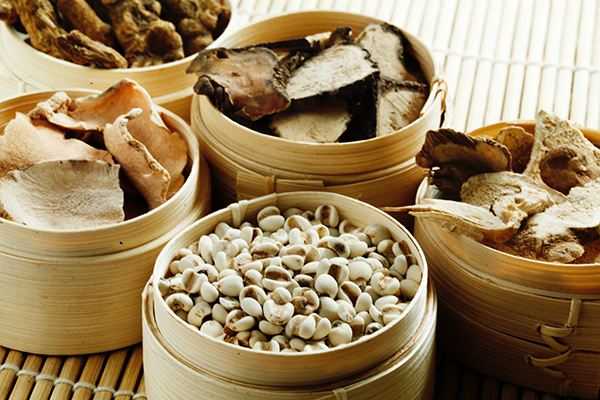


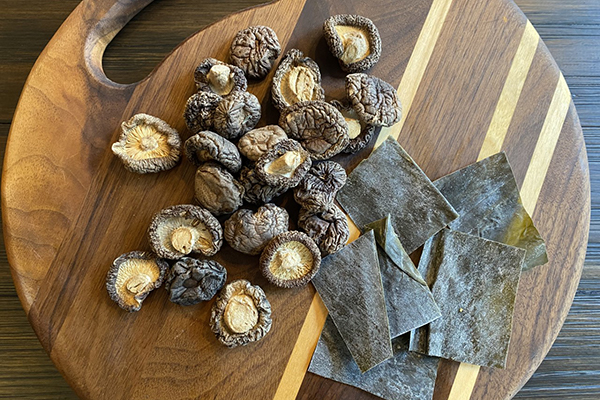
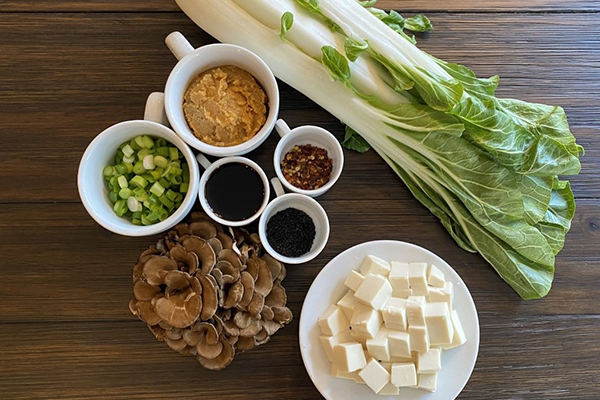
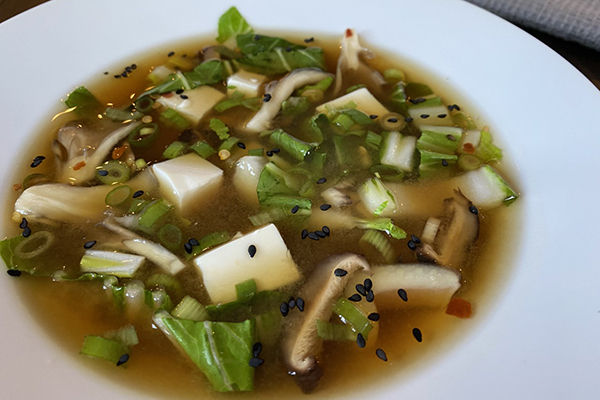
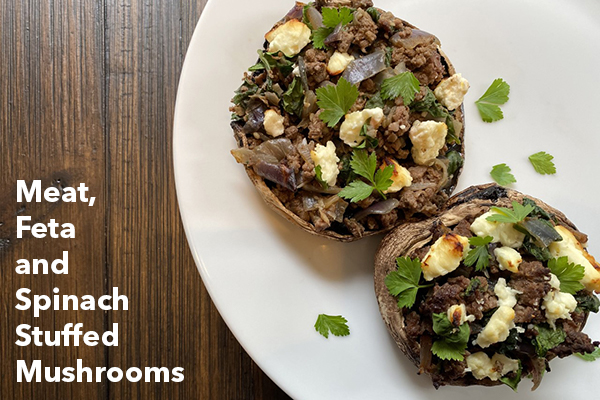
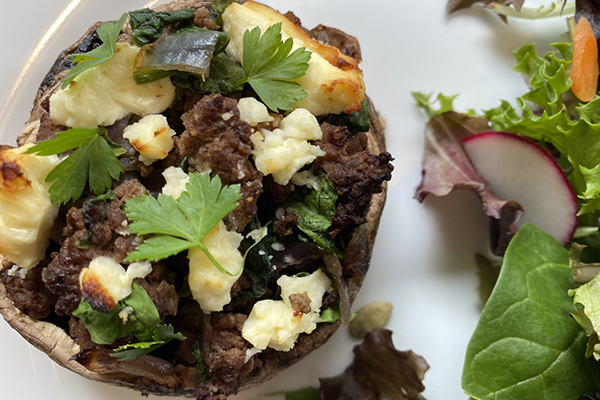

4 Comments
Great blog, Jen! I can't wait to share these recipes with my fungi fascinated sons.
🙂
Jen, I love mushrooms! I've always wanted to go foraging for them but would definitely have to go with an expert. I've witnessed the health benefits from varied mushroom tinctures, coffee powders and the mushroom itself. Can't wait to get cooking with these delicious looking recipes. By the way, being a fellow yogi, I thought you'd appreciate this. I read a book many years ago when I was in yoga training about the Arctic shamans who gave out mushrooms on the winter solstice and even the Christmas tradition. Truly magical! This article is definitely full of information and puts the FUN in fungi!
Thanks Celeste! I love that tidbit about mushrooms for winter solstice...sounds like a fun tradition to adopt! If you ever do learn how to forage for mushrooms, I'd love to come along!